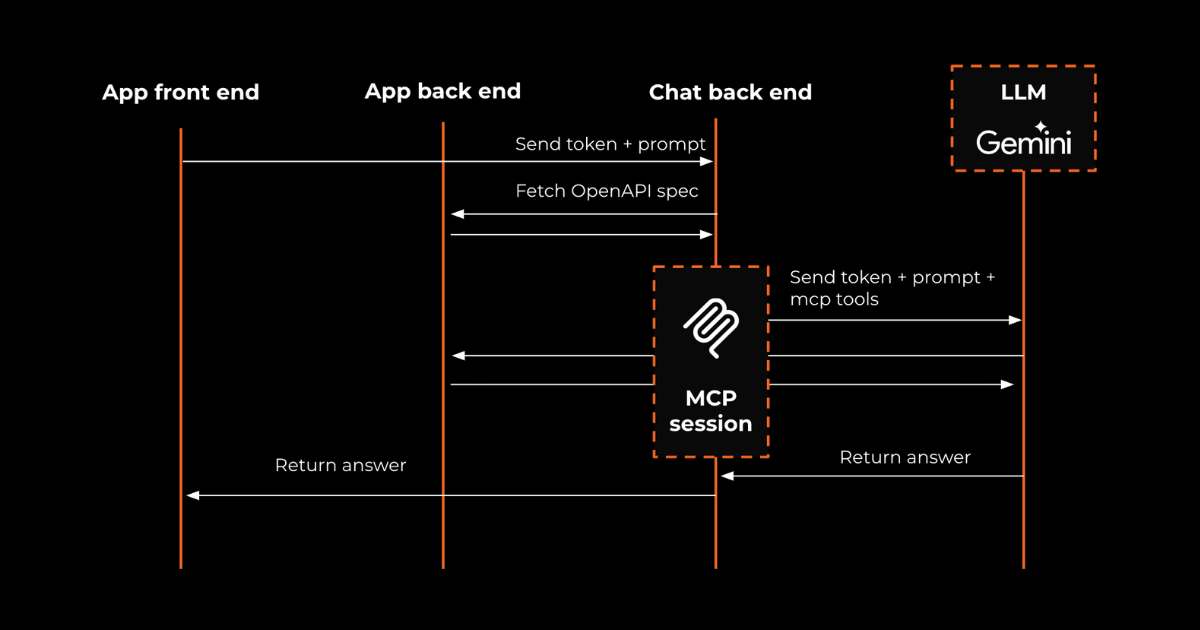LangFlow: building AI-powered apps without coding
The demand for AI-powered applications is rapidly growing, often outpacing the speed at which they can be developed from scratch with traditional coding approaches. To bridge this gap between concept and execution, there have been significant efforts in developing low/no-code tools for building AI-powered applications. These tools enable anyone—from software developers to product managers and business analysts—to rapidly build AI applications through an intuitive, visual interface. As such, it’s very easy to transform ideas into quick proof of concepts without the need for extensive software development cycles. In the following sections, we will dive deeper into LangFlow, a open-source visual framework for building multi-agent and RAG applications.
Reusable components

Figure 1 illustrates the core principles building AI-powered applications using LangFlow: reusable drag & drop components that can be linked to one another to create AI pipelines, which can also be reused across applications. When creating a new application, LangFlow offers several templates to start from, from document QA to vector store RAG’s and complex tasks agents. Users can then further refine and add/remove components to match the unique requirements of their application, or start entirely from a blank flow.
LangFlow offers a large variety of components. Inputs/outputs are wrappers for user input and application output respectively, separated into raw text and chat.
Prompts can have a template, context and user message, each of which can be inserted directly to the component or indirectly by linking it with the output of another component. For example, the output of a chat input and chat memory can be the user message and context respectively.
Similarly, the output of a prompt can be the input of a model component, which in turn executes the prompt. LangFlow supports a plethora of large language models (LLMs) and embedding models from various providers (OpenAI, Google, Anthropic, Hugging Face, …), both open source and proprietary.
Finally, LangFlow offers vector store components for storing embeddings, integrating with most common database technologies and providers. For most providers, users need an account in order to obtain an API key and create the database, both of which are needed to configure the component. There are also a large variety of experimental (BETA) components, such as entire agents and prototypes, which can be extremely useful for prototyping in a non-production environment.
Example: document QA app

Figure 2 shows an example of how a document QA chatbot can be built with just a few components. Local files can be uploaded using the File component, which are then parsed into text by the Parse Data helper. Combined with the user’s question from the Chat Input, the prompt is created and passed to an OpenAI LLM, whose output is wrapped into a Chat Output and thus shown to the user in chat. Figure 3 shows the user interacting with the application, where the uploaded file is a PDF containing frequently asked questions for a restaurant.

Closing statement
The rapid evolution of frameworks for building AI applications has paralleled the advancements in LLMs. No-code platforms like LangFlow empower anyone to bring AI-driven ideas to life, quickly turning concepts into tangible proof of concepts with minimal friction. While full-fledged AI applications at a production scale still require a more traditional coding approach due to the need for fine-grained customization, scalability, and performance, these no-code frameworks are truly remarkable for accelerating the early stages of development and making it easier than ever to build smaller scale proof of concepts.
See also
Let's build. Together!
Are you looking for an entrepreneurial product development partner? Never hesitate to schedule a virtual coffee.




.png)
.png)
